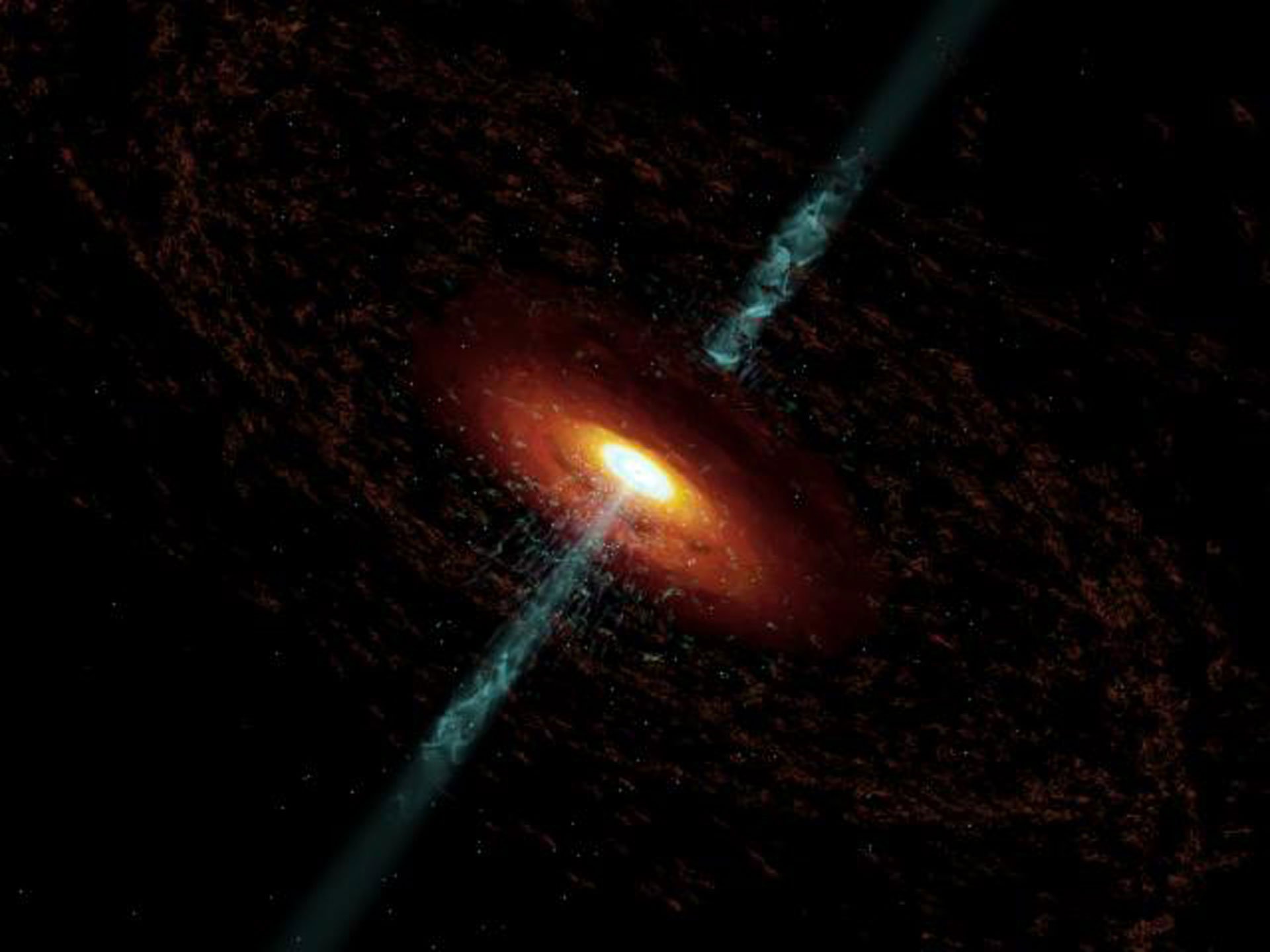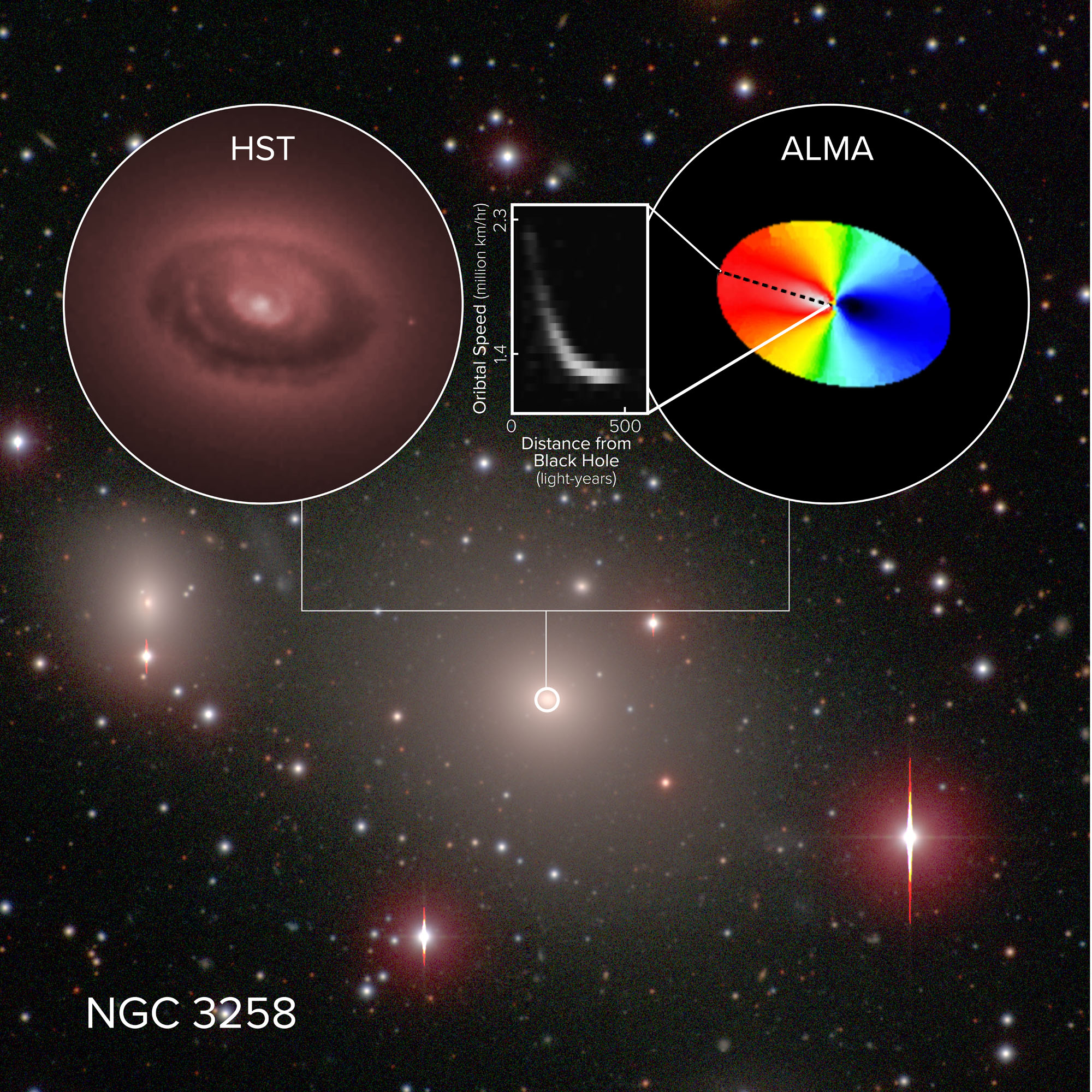A radio view into a black hole’s backyard
By definition, black holes themselves remain shut off from direct observation. But astronomers have been able to precisely image the sphere of influence of a black hole – the area in which its gravity is the dominant force. In the case of a supermassive black hole in the interior of a galaxy, this area can be up to 500 light-years across. For comparison, the closest star to the Sun is a good four light-years away.
This imaging was done by the Atacama Large Millimeter/submillimeter Array (ALMA) in the Atacama desert of Chile. NGC 3258, a giant elliptical galaxy about 100 million light-years from Earth was the object being observed. This galaxy is one of about ten percent of galaxies whose core is surrounded by a rotating cloud of cold (non-ionized) gas. These clouds contain, among other things, carbon monoxide (CO), which can be observed in the submillimeter range, ALMA’s specialty.
Here, the astronomers determined the Doppler shift of the emission lines of the carbon monoxide. I’m sure you’ve heard of the Doppler effect before from cars, whose engine noise sounds higher as a car approaches an observer and lower as it moves away again. Thus, ALMA can measure what parts of the cloud are moving toward and away from us and how fast those parts are moving, and thus how quickly the cloud is rotating. On the outside, 500 light-years from its center, the material of the cloud is moving at approximately 1 million kilometers per hour; on the inside, 65 light-years from the black hole, however, it is moving three-times faster. This rotational velocity depends on the distance from the black hole – and on its mass. This allows the researchers to be able to determine that the mass of the black hole in the core of NGC 3258 is about 2.25 billion solar masses.
This value has an accuracy of 99 percent. However, a systematic deviation of 12 percent is possible, because the true distance of NGC 3258 is not known with extreme precision. Even including this uncertainty, however, this is still the most precise determination of the mass of a black hole outside of the Milky Way.


Pictures: ALMA (ESO/NAOJ/NRAO), B. Boizelle; NRAO/AUI/NSF, S. Dagnello; Hubble Space Telescope (NASA/ESA); Carnegie-Irvine Galaxy Survey